WWF Italy since 2017 has been organizing and coordinating “Urban Nature“: a network of various types of events, distributed throughout the country, with the aim of enhancing urban green spaces and raise awareness of the important roles that nature plays in city environments.
Common Blackbird.

After joining this initiative in previous years with a series of activities – from the production of a spot about urban biodiversity to an information stand in Villa Floridiana in Naples – last October we had the chance to organize a BioBlitz inside the Agnano Crater (NA).
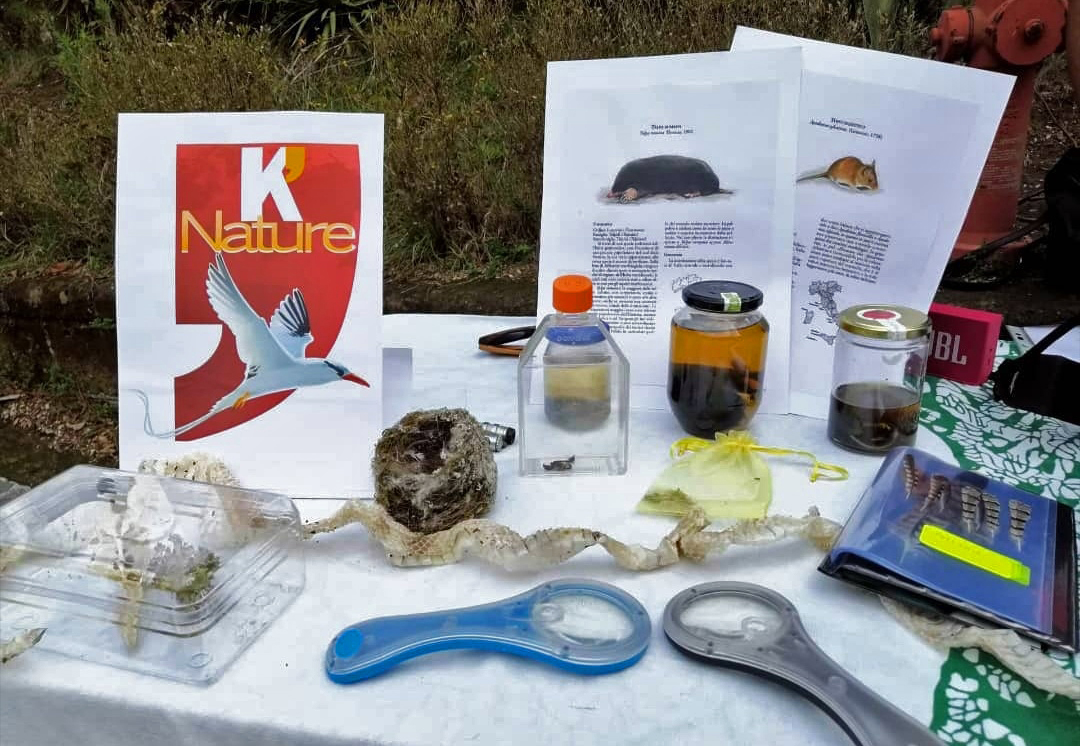
A BioBlitz consists of searching and identifying as many species as possible in a given area in a short period of time. This therefore sees the participation of families, students and other citizens who, with the help of researchers, work to build an inventory of the biodiversity of a place, helping to bring people closer to the nature that surrounds us and making useful observations for science and conservation.
Photo by Martin Devrient.

Organizing this large event was made possible thanks to the collaboration with WWF Naples, the support of the “Consortium of Reclamation of the Conca di Agnano and the Phlegraean Basins” and the patronage of the “Terme di Agnano”.
The BioBlitz took place from 10:00 to 12:30 and saw two investigative groups coordinated and led by professional researchers in action. This had a maximum number of participants of 40 people, according to the anti-Covid19 measures.
K' Nature team.

The team included five experts from 5 different Taxa: our three zoologists Valerio Giovanni Russo, Andrea Senese and Luca Francesco Russo (specialized respectively in Herpetology, Ornithology and Teriology), assisted by the entomologist Ivano Adamo and the botanist Giusy De Luca.
Photo by Martin Devrient.
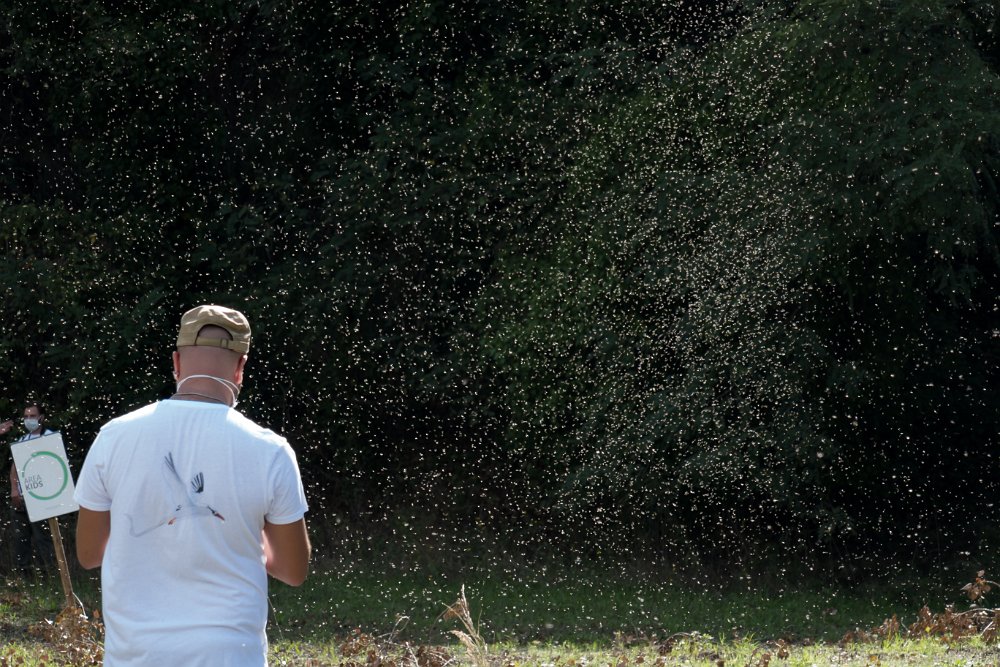
The environmental heterogeneity present within the crater offered the possibility, albeit briefly, to investigate different ecosystems: from the natural meadow to the scrub and garrigue environment, from the lowland wood to the wetlands with canals and reeds. The very short time available made it possible to carry out a quick and preliminary database on the flora and fauna that live in the area.
Photo by Martin Devrient.
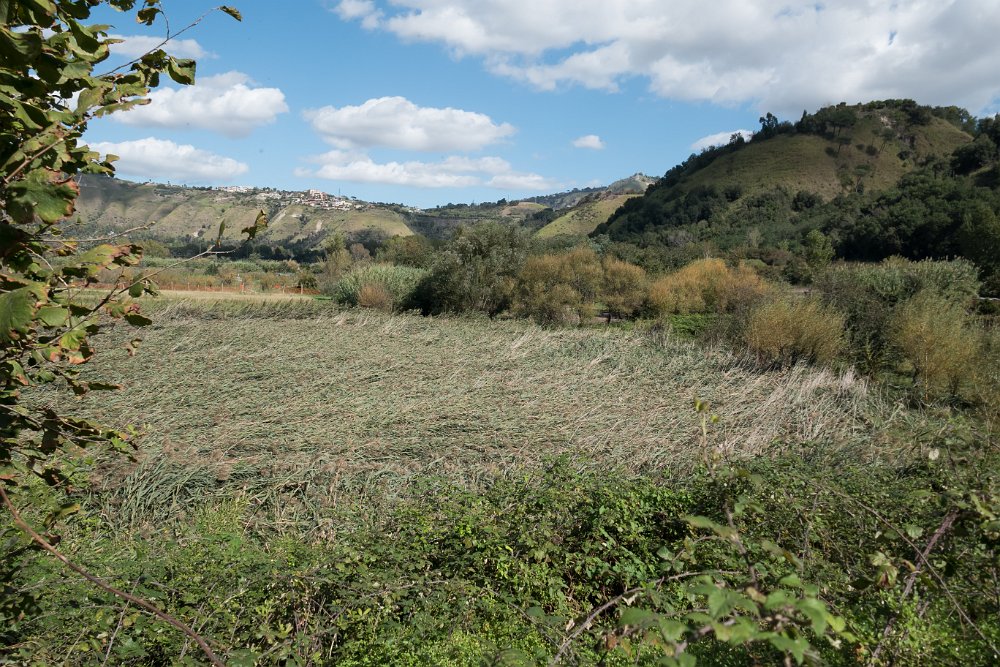
During the morning, data were collected using different techniques: direct observation (visual surveys), spontaneous acoustic census, entomological net capture, camera trapping and search for traces and signs. These involved the census of different taxonomic groups: Plants, Invertebrates, Amphibians, Reptiles, Birds and Mammals.
Photo by Martin Devrient.
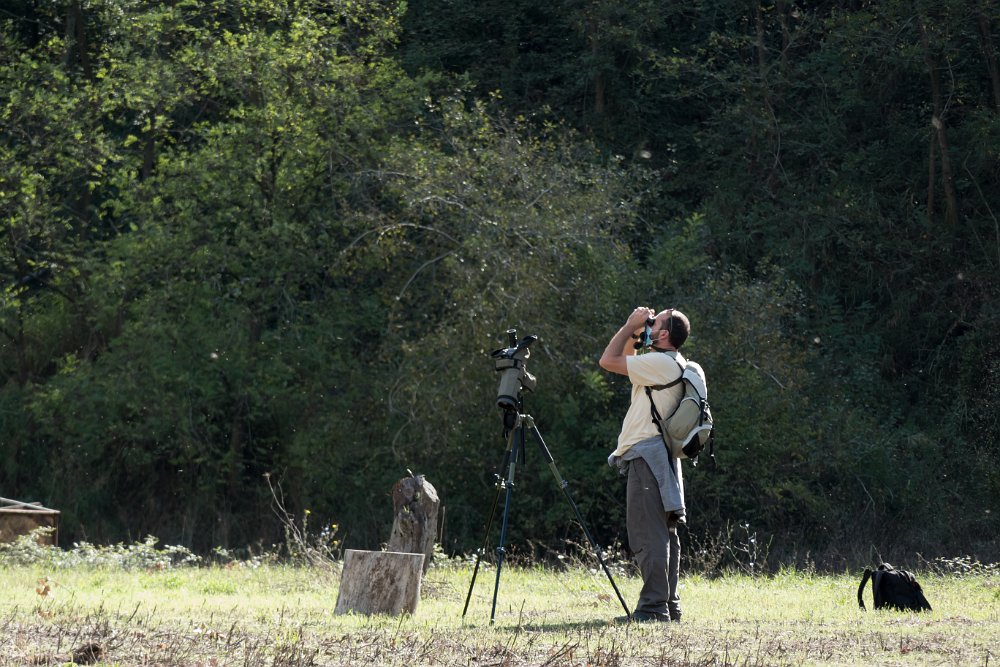
As regards the Invertebrates fauna, especially the Arthropods, the capture with a net was followed in some cases by collecting live specimens in special containers. The identification of the Insects was carried out with the help of taxonomic keys.
Female of Sympetrum fonscolombii.

During the exploration of the Agnano Crater, signs and traces were found confirming the presence of some species within this area of the Phlegraean Fields: bird feathers and mounds of soil related to the activity of Moles. From these last signs it was not possible to estabilish the exact species, because of the presence in the province of Naples, in the syntopy, of both the Roman Mole (Talpa romana) and Blind Mole (Talpa caeca).
The edges of the crater are characterized by scrub vegetation, composed of arboreal plants typical of the Mediterranean basin, including Holm Oak (Quercus ilex), Downy Oak (Quercus pubescens), Manna Ash (Fraxinus ornus), Bay Laurel (Laurus nobilis), Italian Buckthorn (Rhamnus alaternus), Mastic Tree (Pistacia lentiscus) and Oleander (Nerium oleander).
Photo by Martin Devrient.

As often happens near urban centers, among the tree plants, common are the invasive alien species, such as Tree of Heaven (Ailanthus altissima) and Black Locust (Robinia pseudoacacia). These species, coming from Asia and North America respectively, create complex dynamics of ecological competition with native species.
Much of the investigated area is dominated by the meadow environment, formed by a great diversity of botanical species, including Graminaceae – herbaceous plants characterized by greenish inflorescences – and Asteraceae – plants with simple leaves gathered in basal rosettes and flower heads of various color. This is also the habitat of hundreds of Invertebrate species, often invisible to inexperienced eyes.
Rhacocleis neglecta.

Regarding Gastropods Molluscs, they were found abundant numbers of Massylaea vermiculata, Cantareus apertus e Cochlicella barbara.
As for the Arachnids, however, only a female of Wolf Spider (Hogna radiata) was contacted, still intent on carrying the offspring on the opisthosoma. It is a very common species for the countries of Mediterranean Europe, which manages to colonize a wide range of environments, from meadows above sea level to mountain forests.
Photo by Martin Devrient.

Among the Insects still in full reproductive activity, dense and showy swarms of male Harvester Ants (Messor cfr. capitatus) have been observed.
The brief inspection of the shrub and grassy areas around the pond and the canals revealed the presence of Praying Mantis (Mantis religiosa), Orthoptera such as Conocephalus conocephalus, Ruspolia nitidula and Acrida ungarica, the Aetheropterous Stenodema calcarata and the Carabid Beetle Pterostichus melas.
Calliptamus barbarus.
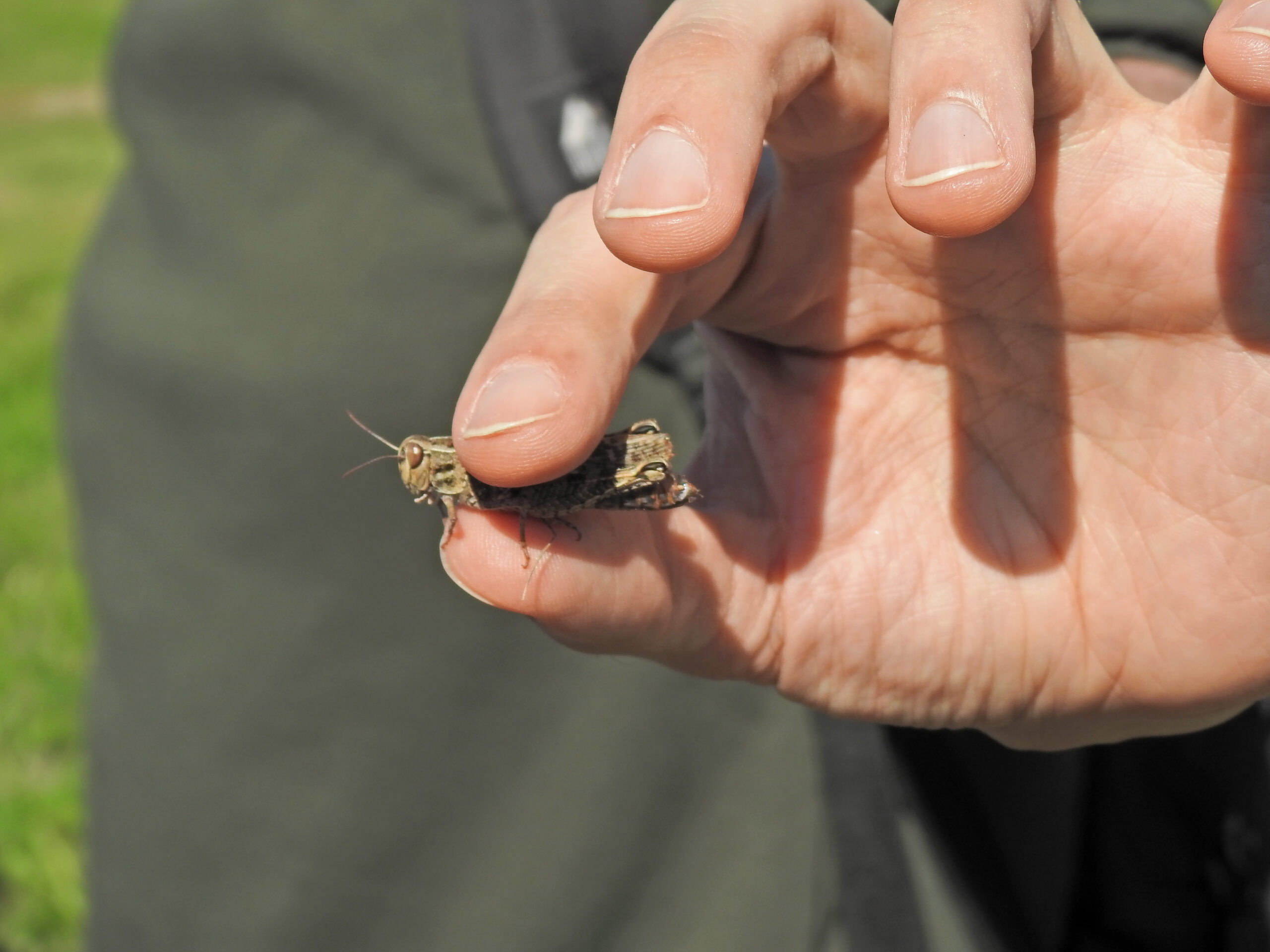
Thanks to the BioBlitz, as regards the entomofauna, we made finds of considerable interest that reconfirm the presence in Campania, and in particular precisely for the Phleagrean Fields area, of two tiny Orthopterans: the Trigonidium cicindeloides and the Tetrix ceperoi, hygrophilous species with widely underestimated distribution.
Green Water Frog.

As for the herpetofauna, only multiple individuals of Green Water Frog (Pelophylax sp.) and Italian Wall Lizard (Podarcis siculus) were observed during the morning. These are two rather common species in synanthropic environments, which manage to colonize successfully thanks to their wide ecological spectrum.
Italian Wall Lizard.

The Agnano Crater is characterized by the presence of a complex system of wetlands: flooded meadows, pools of water originating from thermal springs and a dense network of artificial canals.
Along these bodies of water it is possible to observe the typical riparian vegetation, both in shrub and arboreal form with White Willows (Salix alba) and Black Poplars (Populus nigra), and with plants that constitute the reeds environment such as Broadleaf Cattail (Typha latifolia) and Common Reed (Phragmites australis).
Photo by Martin Devrient.
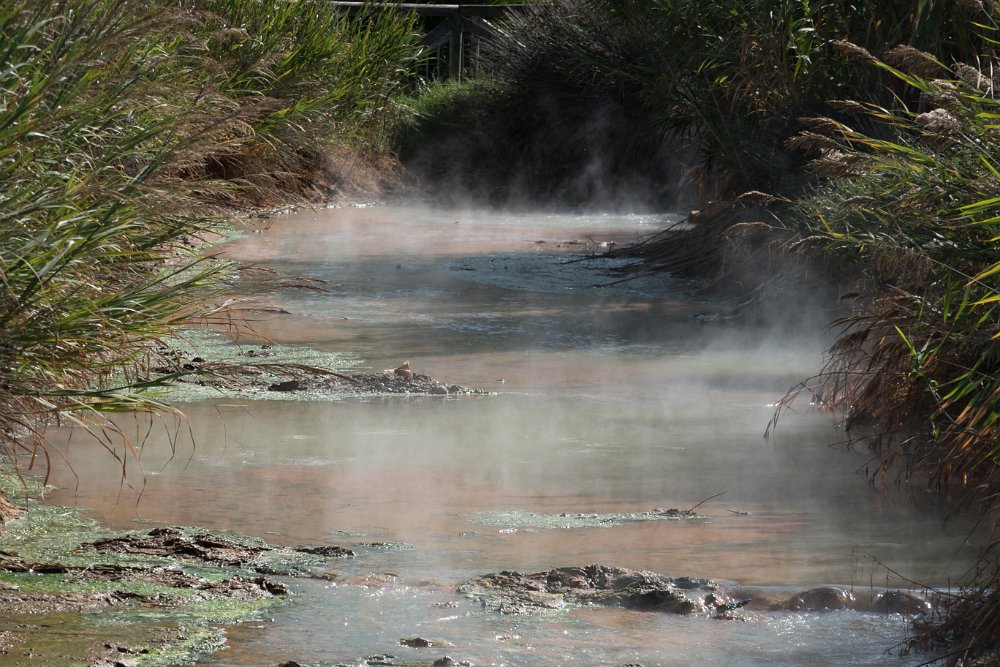
Thanks to the presence of canals and flooded meadows, the area is able to host many species related to wetlands, including migratory, wintering and nesting Birds. Among the observed species, in fact, there are Eurasian Teal (Anas crecca), Mallard (Anas platyrhynchos), Little Egret (Egretta garzetta), Cattle Egret (Bubulcus ibis) and Common Moorhen (Gallinula chloropus).
Cattle Egret.

Eurasian Teal.

During the morning, 4 species of birds of prey were contacted, three of which common in rural environments and also observable in the city: Common Buzzard (Buteo buteo), Eurasian Sparrowhawk (Accipiter nisus) and Common Kestrel (Falco tinnunculus). Furthermore, an individual of Western Marsh Harrier (Circus aeruginosus) was spotted, probably attracted by the presence of the reeds and prey associated with it.
For the latter species it is not possible to establish whether it was a migratory individual or one that exploits the area for a longer period (aestivation or wintering).
Western Marsh Harrier.
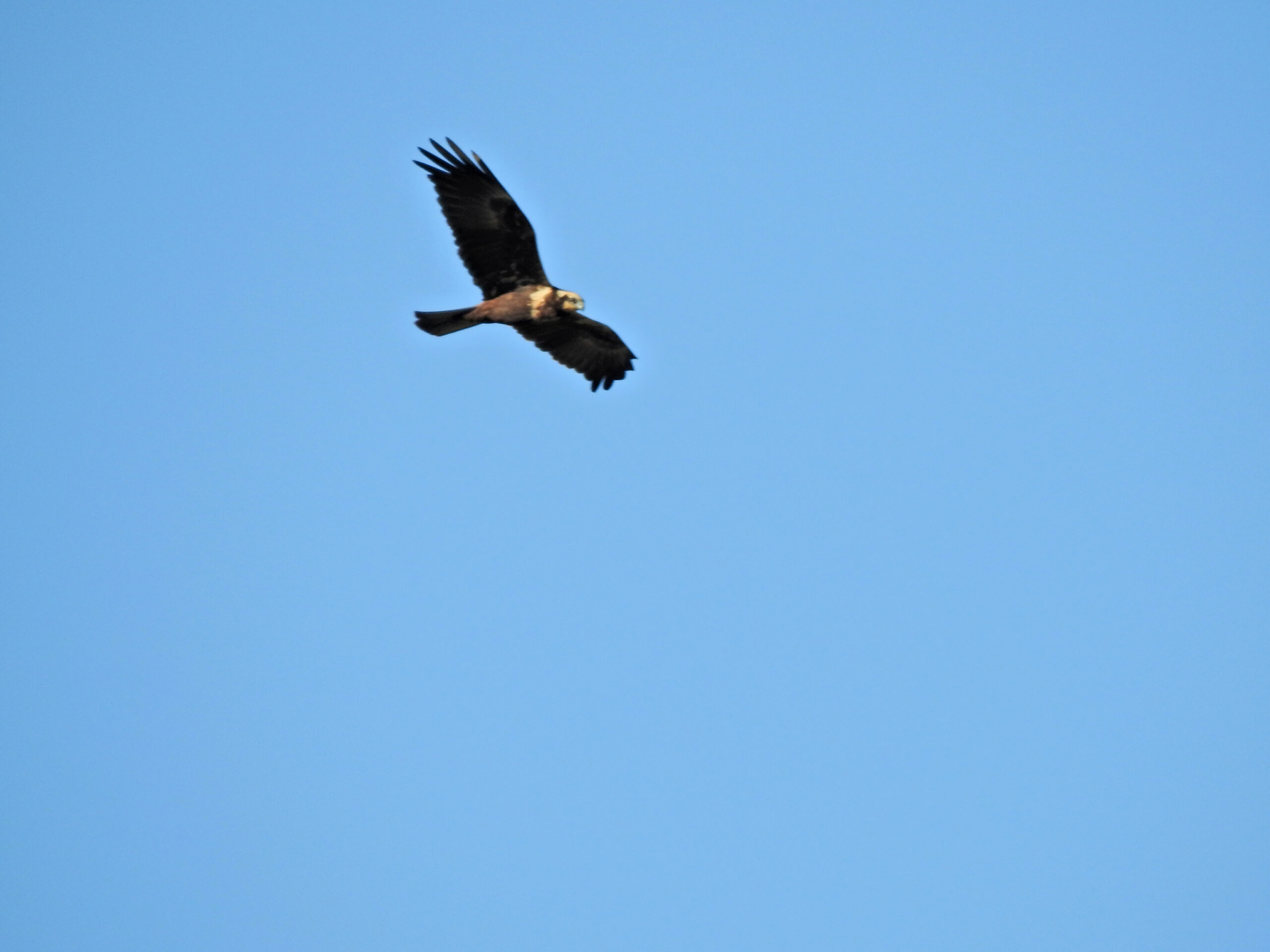
Thanks to the different environmental components that characterize the crater, the investigation highlighted the presence of many species linked to grassland environments, including White Wagtail (Motacilla alba) and Grey Wagtail (Motacilla cinerea), others typical of habitats with a greater prevalence of trees such as Wood Pigeon (Columba palumbus), European Green Woodpecker (Picus viridis), Great Spotted Woodpecker (Dendocopos major) and Eurasian Jay (Garrulus glandarius).
European Robin.

Tree Sparrow.

We also witnessed the massive migratory passage of Barn Swallows (Hirundo rustica) and Common House Martin (Delichon urbicum), with more than 200 individuals per species, feeding in flight near the periplus of the crater.

Finally, in order to include, at least partially, data concerning the teriofauna in the survey, it was deemed appropriate to use the camera trapping technique, useful for confirming the presence of elusive Mammal species with mainly nocturnal habits.
Thanks to the images taken by the camera trap – positioned a few days before the visit in a place deemed suitable – the participants were able to observe a Red Fox (Vulpes vulpes)!
The day’s observations were uploaded on iNaturalist, a citizen science platform used by researchers, biologists and simple people based on mapping and sharing biodiversity observations made worldwide.
Eurasian Teals.
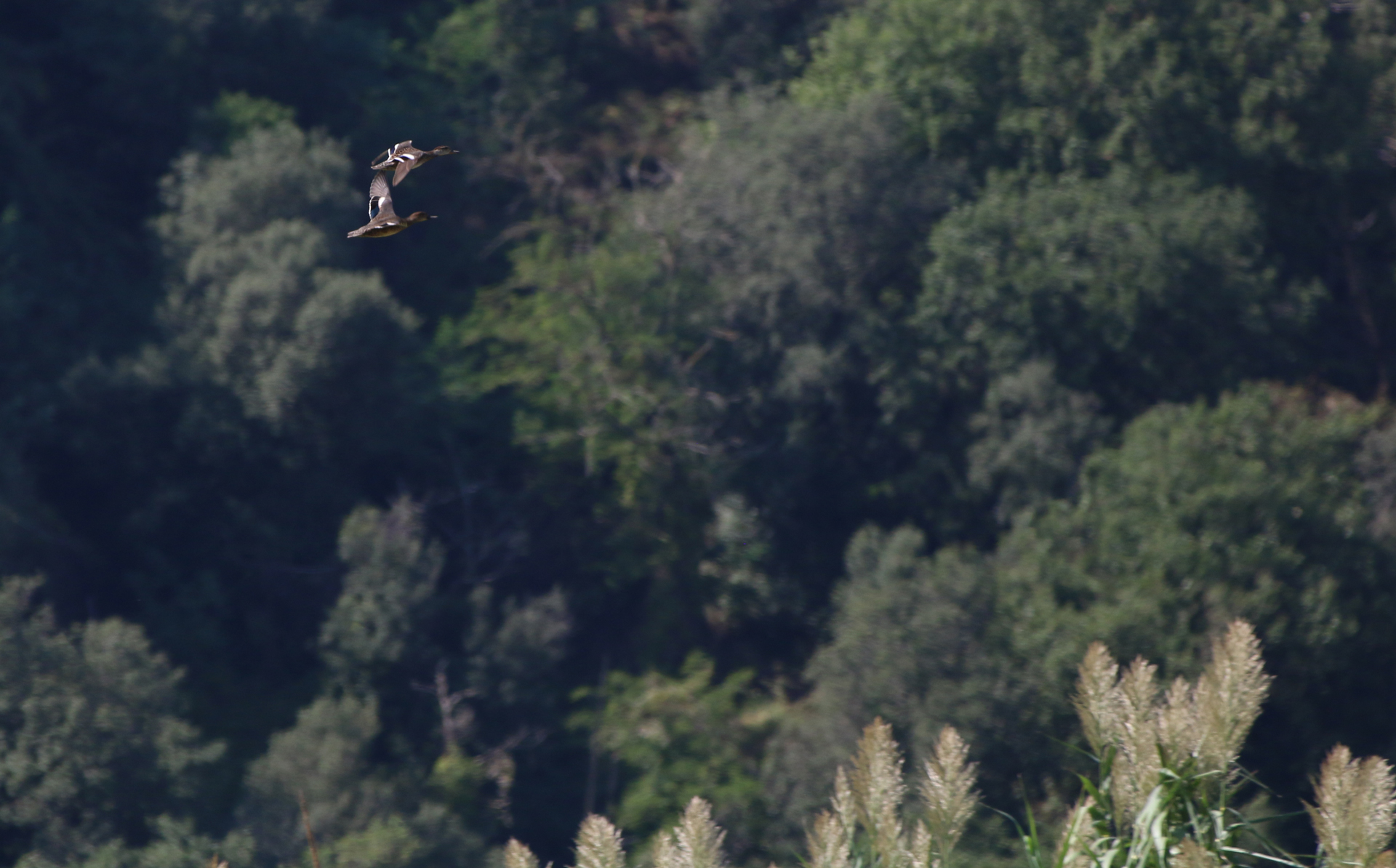
The initiative garnered great enthusiasm from the participants and RAI with its regional news program decided to dedicate an entire report.
Once again the green areas present within the Municipality of Naples managed to give unique emotions to the participants, confirming their great value not only as regards the conservation of animal and plant species, but also for what concerns education and the approach of the childrens towards issues such as respect for other forms of life and environmental sustainability, the protection of native species and the potential that biodiversity has in the field of ecotourism.
Praying Mantis.

CHECKLIST
PLANTS
- Ailanthus altissima
- Arundo donax
- Cichorium intybus
- Clemantis vitalba
- Convolvulus arvensis
- Daucus carota
- Diospyros kaki
- Eucalyptus globulus
- Euphorbia helioscopia
- Fraxinus ornus
- Ipomea violacea
- Juncus effusus
- Laurus nobilis
- Nerium oleander
- Phragmites australis
- Picris hieracioides
- Plantago lanceolata
- Populus nigra
- Quercus ilex
- Quercus pubescens
- Pistacia lentiscus
- Rhamnus alaternus
- Robinia pseudoacacia
- Rubus ulmifolius
- Salix alba
- Trifolium repens
- Typha latifolia
- Verbascum thapsus
MOLLUSCS
- Massylaea vermiculata
- Cantareus apertus
- Cochlicella barbara
ARACHNIDS
- Hogna radiata
INSECTS
- Sympetrum fonscolombii
- Conocephalus conocephalus
- Ruspolia nitidula
- Rhacocleis neglecta
- Trigonidium cicindeloides
- Tetrix ceperoi
- Pezotettix giornae
- Calliptamus barbarus
- Acrida ungarica
- Oedipoda caerulescens
- Omocestus rufipes
- Mantis religiosa
- Philaenus spumarius
- Cicadella viridis
- Stenodema calcarata
- Pyrrhocoris apterus
- Myrmus miriformis
- Stictopleurus punctatonervosus
- Carpocoris mediterraneus
- Dolycoris baccarum
- Eysarcoris ventralis
- Nezara viridula
- Graphosoma italicum
- Calathus cinctus
- Pterostichus melas
- Poecilus cupreus
- Ocypus olens
- Coccinella septempunctata
- Propylea quatuordecimpunctata
- Pimelia rugulosa
- Blaps gibba
- Vesperus luridus
- Chrysolina bankii
- Chrysolina haemoptera
- Psylliodes sp.
- Aedes albopictus
- Pieris rapae
- Pontia edusa
- Colias croceus
- Polistes associus
- Vespa orientalis
- Xylocopa violacea
AMPHIBIANS
- Green Water Frog (Pelophylax sp.)
REPTILES
- Italian Wall Lizard (Podarcis siculus)
BIRDS
- Mallard (Anas platyrhynchos)
- Eurasian Teal (Anas crecca)
- Cattle Egret (Bubulcus ibis)
- Little Egret (Egretta garzetta)
- Western Marsh Harrier (Circus aeruginosus)
- Common Buzzard (Buteo buteo)
- Eurasian Sparrowhawk (Accipiter nisus)
- Common Kestrel (Falco tinnunculus)
- Common Moorhen (Gallinula chloropus)
- Yellow-legged Gull (Larus michahellis)
- Feral Pigeon (Columba livia var. domestica)
- Wood Pigeon (Columa palumbus)
- Eurasian Green Woodpecker (Picus viridis)
- Great Spotted Woodpecker (Dendocopos major)
- Barn Swallow (Hirundo rustica)
- Common House Martin (Delichon urbicum)
- White Wagtail (Motacilla alba)
- Grey Wagtail (Motacilla cinerea)
- European Robin (Erithacus rubecula)
- Common Blackbird (Turdus merula)
- Blackcap (Sylvia atricapilla)
- Cetti’s Warbler (Cettia cetti)
- Great Tit (Parus major)
- Eurasian Blue Tit (Cyanistes caeruleus)
- Long-tailed Tit (Aegithalos caudatus)
- Eurasian Magpie (Pica pica)
- Eurasian Jay (Garrulus glandarius)
- Western Jackdaw (Corvus monedula)
- Hooded Crow (Corvus cornix)
- Tree Sparrow (Passer montanus)
MAMMALS
- Mole (Talpa sp.)
- Red Fox (Vulpes vulpes)